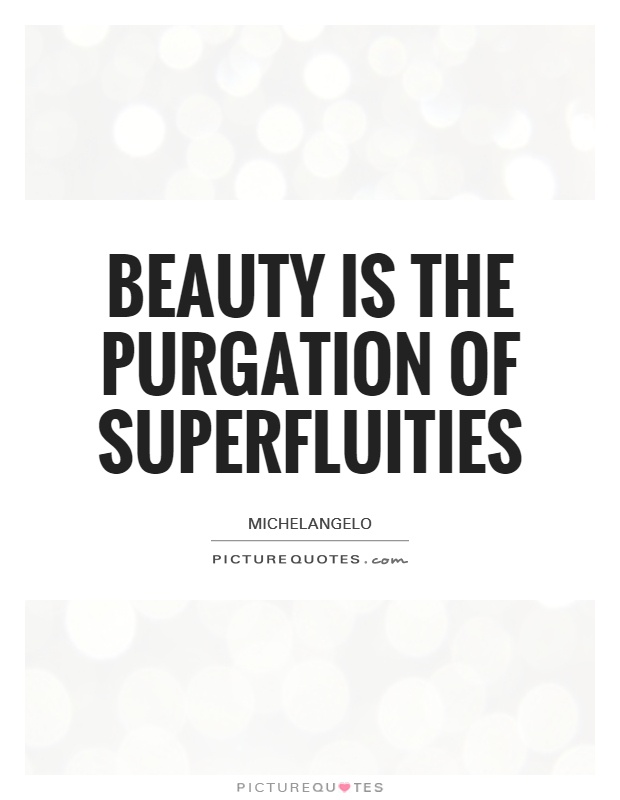Beauty is the purgation of superfluities

Beauty is the purgation of superfluities
Michelangelo, the renowned Italian artist of the Renaissance period, is often quoted as saying, "Beauty is the purgation of superfluities." This statement encapsulates his belief that true beauty lies in simplicity and the removal of excess or unnecessary elements. Michelangelo's works, whether in sculpture, painting, or architecture, exemplify this principle as he sought to create pieces that were both aesthetically pleasing and emotionally resonant.In Michelangelo's sculptures, such as his famous statue of David, we see a focus on the human form stripped down to its essential elements. The figure of David is depicted in a state of calm and concentration, with every muscle and sinew carefully rendered to convey a sense of strength and vitality. There is no extraneous detail or ornamentation to distract from the purity of the form. This simplicity allows the viewer to appreciate the beauty of the human body in its most natural state.
Similarly, in Michelangelo's paintings, such as the Sistine Chapel ceiling, we see a mastery of composition and balance that creates a sense of harmony and unity. The intricate details of the figures and scenes are carefully arranged to draw the viewer's eye towards the central themes of the work. By eliminating unnecessary elements and focusing on the essential aspects of the composition, Michelangelo is able to create a sense of beauty that transcends mere aesthetics.












 Friendship Quotes
Friendship Quotes Love Quotes
Love Quotes Life Quotes
Life Quotes Funny Quotes
Funny Quotes Motivational Quotes
Motivational Quotes Inspirational Quotes
Inspirational Quotes